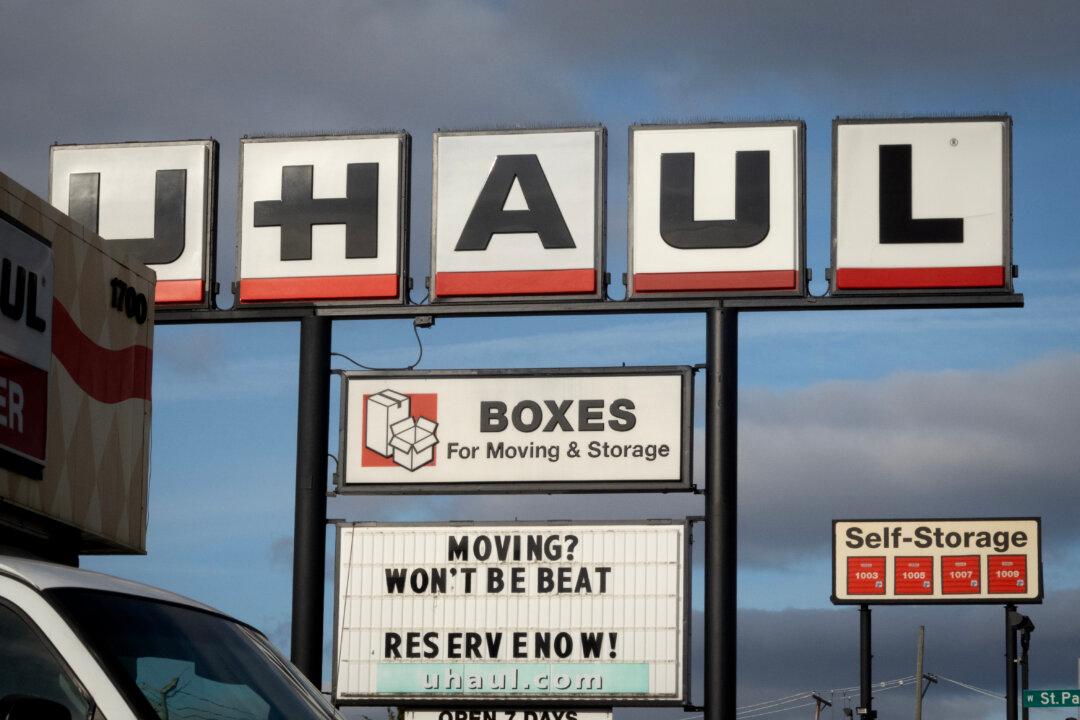Commentary
Few things better exemplify the extravagance of the consumer economy than the rise of the self-storage industry. The idea of stashing one’s treasured possessions in secure places dates back centuries, from underground storage pits in ancient China to cellars in medieval Europe. But the business of self-storage as we know it arose in the United States during the 1950s and 1960s, when entrepreneurs started building managed facilities where consumers could rent individual storage units on a monthly basis.
Today, an
estimated 10.2 percent of American households rent a self-storage unit, according to property brokerage CBRE. Self-storage marketplace SpareFoot reports that consumer storage in the United States is now a
$44.3 billion industry, with 52,301 self-storage facilities holding Americans’ excess stuff, totaling 2.1 billion square feet of rentable space nationwide. Americans were paying an average of $85.30 per month to rent a storage unit as of July 2024, according to the platform.
Moreover, the average U.S. household now uses 13.4 square feet of self-storage space, up from 8.9 square feet in 2003, the earliest year for which CBRE reports the data. Self-storage has become a large, lucrative industry and an increasingly popular asset class for real estate investors.
More than 30 percent of the nation’s total self-storage inventory is controlled by five publicly traded companies, including U-Haul Holding Company and real estate investment trusts such as Public Storage and Extra Space Storage, according to RentCafe.
While more recent figures aren’t available, in 2018, the United States
accounted for 90 percent of all self-storage inventory in the world, data platform Statista reported. But self-storage is catching on in many other countries and regions. In the United Kingdom, for example, the amount of self-storage space tripled between 2005 and 2023, and the industry’s annual turnover has
topped 1 billion pounds ($1.3 billion), according to brokerage Cushman & Wakefield.
Asia is also undergoing a self-storage boom. Mordor Intelligence projects that the Asia-Pacific self-storage market will expand from around 32 million square feet of rentable space in 2025 to
more than 47 million square feet by 2030. Drivers of demand include rapid urbanization, changing lifestyles, and space constraints in densely populated areas like Hong Kong and Taiwan. In Singapore, where many people run e-commerce businesses as a side job, self-storage units are commonly used to hold inventory.
The COVID-19 pandemic accelerated demand for self-storage in the United States, as many people hastily relocated or cleared space for home offices amid the mass adoption of work-from-home policies. Self-storage vacancies
dropped below 3 percent (compared to the industry standard of 8 percent), prompting a 40 percent surge in move-in rents from June 2020 to March 2022, according to CBRE. Rising interest rates and slowing housing market activity have cooled the market since 2023.
Despite this, CBRE states that self-storage demand and property values have remained healthy. A reactivated housing market and ongoing migration to Sunbelt regions are among the factors expected to sustain the sector’s growth over the long term. The brokerage notes that the best self-storage operators “employ advanced data analytics around customer behavior to optimize discounts and teaser rents against long-term client retention and income growth.”
That is a polite way of saying that self-storage companies entice new customers with attractive deals, then hike rents, sometimes dramatically, in the months or years after they move in.
The convenience and flexibility that self-storage offers also generate a significant amount of waste. When customers fail to pay rent or abandon their units, self-storage operators typically auction off the contents, a phenomenon that inspired the popular reality TV series
Storage Wars. As of this writing, online self-storage auction platform
StorageTreasures displays 25,097 active auctions throughout the U.S. While financial hardship is the top reason that storage units are abandoned, according to South Florida operator Xtra Storage,
another reason is that people relocate and simply forget about their unit or no longer care enough to make rent payments.
As this example suggests, the need for self-storage is closely linked to major life events such as moving. Storage operators refer to the “four Ds” that drive demand for their business: downsizing (of one’s home), decluttering, divorce, and death. All of these events continue to occur regardless of the state of the economy, making self-storage demand somewhat resilient even in the face of recessions.
Long-term trends such as urbanization, regional migration across the U.S., the aging of the baby boomer generation, and the growing number of renter households are poised to support demand for many years to come. More businesses are grabbing self-storage space to safeguard documents and equipment, adding another source of growth.
“There’s a whole industry based on keeping an eye on your stuff,” as comedian George Carlin put it in a 1987 routine. That industry has expanded dramatically since the 1980s. CBRE projects that self-storage usage will reach 16 percent of U.S. households in a decade—up from 9.3 percent in 2019. The growth of self-storage in other countries shows how the American-pioneered trend is taking root in affluent societies around the world. Keeping an eye on our stuff is big business, and getting bigger.







